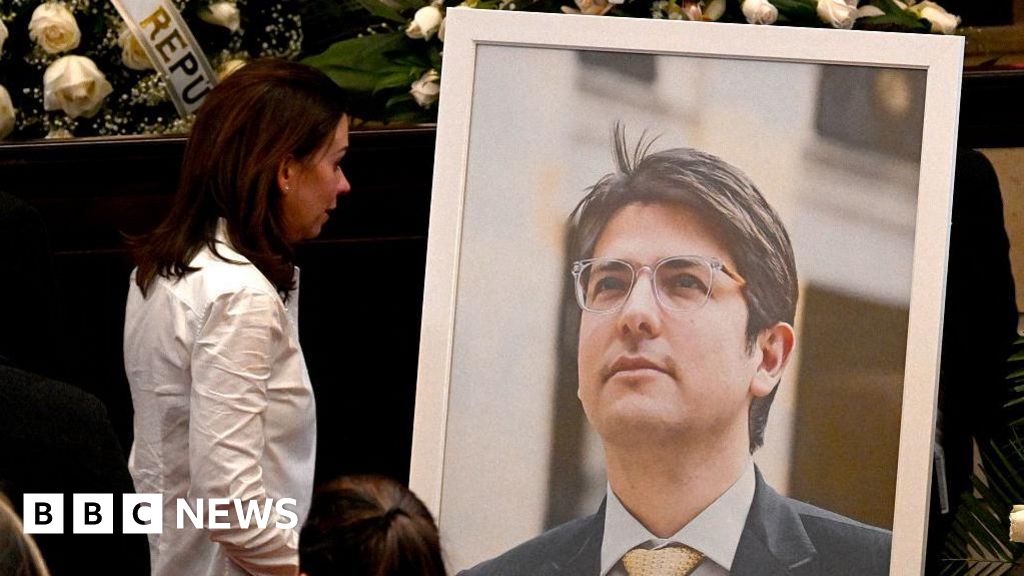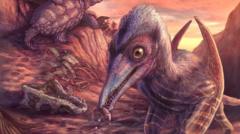The latest findings from palaeontologists in Colombia have revealed a tragic narrative of predator versus predator dating back 13 million years. According to a study published in the journal Biology Letters, a terror bird — an apex avian reptile towering over two meters — bore teeth marks on its leg bone indicative of a battle with a larger predator, likely an ancient caiman.
Teeth impressions on the fossil were meticulously analyzed and were found to closely match the characteristics of Purussaurus neivensis, a crocodile-like reptile of potentially enormous size, measuring up to five meters long. With the help of advanced 3D digital scans, researchers reconstructed what they believe to have been a life-and-death struggle in the humid swamps of what is now Colombia's Tatacoa Desert.
Lead researcher, Dr. Andres Link from Universidad de Los Andes in Bogotá, highlighted the significance of the findings, stating, "There is no sign of healing in the bite marks on the bone. If the bird wasn’t already dead, it certainly perished during the violent encounter." The leg bone, which was initially uncovered by fossil collector César Augusto Perdomo over 15 years ago, offers a rare glimpse into interactions between prehistoric creatures.
The implications of this discovery extend beyond just an isolated incident. It aids in understanding the dynamics of an ancient ecosystem and indicates that even formidable terror birds were not immune to predation. "This analysis reveals that ferocious terror birds were much more vulnerable to predators than previously thought," Dr. Link noted, emphasizing the broader context of predation in ancient environments.
Perdomo, who has dedicated his life to fossil collection, collaborated with scientists to catalog various finds, leading to the exciting identification of this fossil. Such scholarly efforts, say the researchers, highlight the value of each fossil, with even a single bone able to unlock mysteries of life on Earth millions of years ago. "Every piece of a body helps us understand so much about life on the planet in the past," Dr. Link concluded, showcasing the power of fossils to narrate historical tales.
Teeth impressions on the fossil were meticulously analyzed and were found to closely match the characteristics of Purussaurus neivensis, a crocodile-like reptile of potentially enormous size, measuring up to five meters long. With the help of advanced 3D digital scans, researchers reconstructed what they believe to have been a life-and-death struggle in the humid swamps of what is now Colombia's Tatacoa Desert.
Lead researcher, Dr. Andres Link from Universidad de Los Andes in Bogotá, highlighted the significance of the findings, stating, "There is no sign of healing in the bite marks on the bone. If the bird wasn’t already dead, it certainly perished during the violent encounter." The leg bone, which was initially uncovered by fossil collector César Augusto Perdomo over 15 years ago, offers a rare glimpse into interactions between prehistoric creatures.
The implications of this discovery extend beyond just an isolated incident. It aids in understanding the dynamics of an ancient ecosystem and indicates that even formidable terror birds were not immune to predation. "This analysis reveals that ferocious terror birds were much more vulnerable to predators than previously thought," Dr. Link noted, emphasizing the broader context of predation in ancient environments.
Perdomo, who has dedicated his life to fossil collection, collaborated with scientists to catalog various finds, leading to the exciting identification of this fossil. Such scholarly efforts, say the researchers, highlight the value of each fossil, with even a single bone able to unlock mysteries of life on Earth millions of years ago. "Every piece of a body helps us understand so much about life on the planet in the past," Dr. Link concluded, showcasing the power of fossils to narrate historical tales.

















